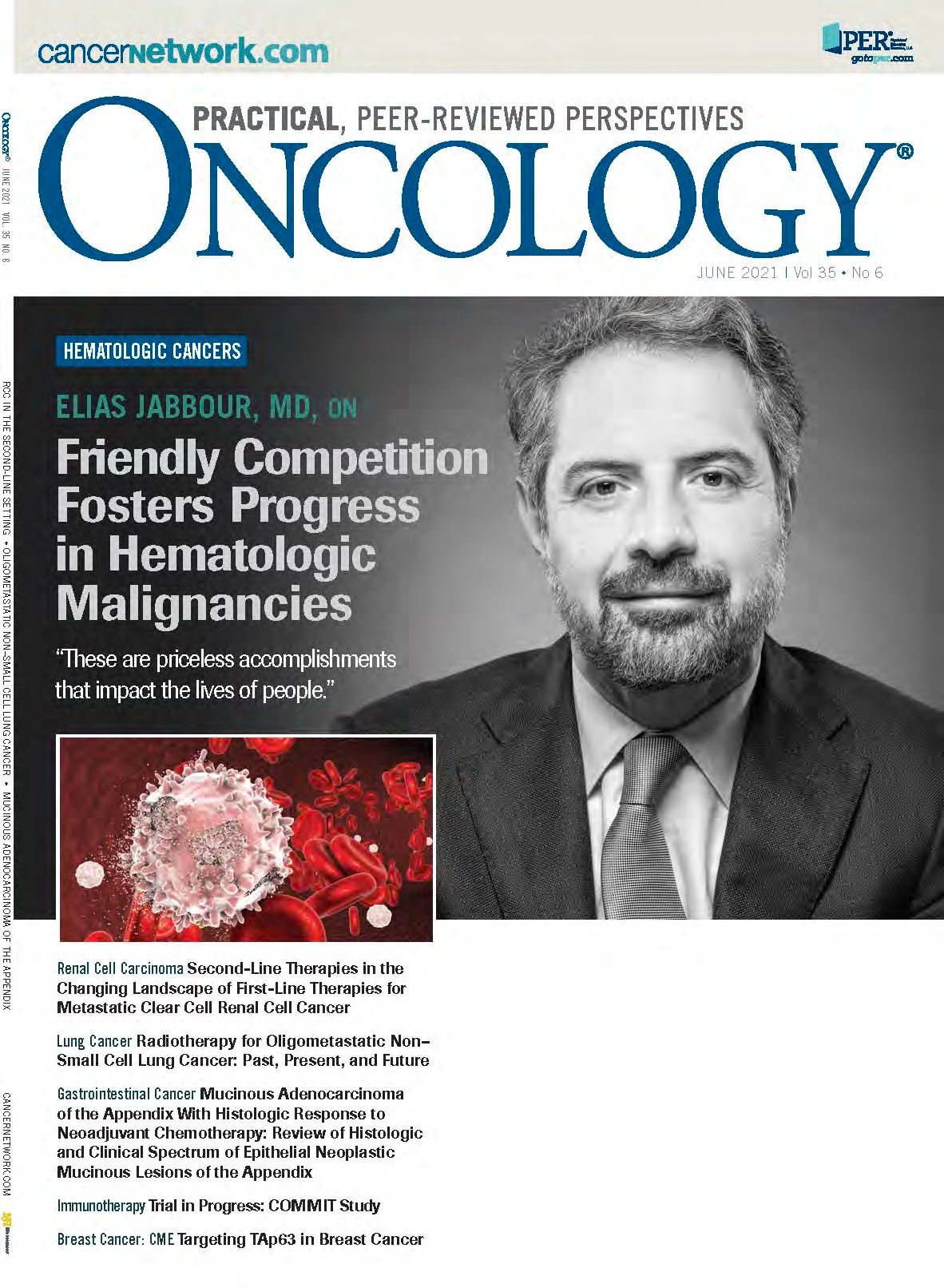Expert Commentary on the Product Profile of Tazemetostat for Follicular Lymphoma
Kelly Valla, PharmD, BCOP, reviews the product profile of tazemetostat for the treatment of follicular lymphoma.
Kelly Valla, PharmD, BCOP
Emory Healthcare
Winship Cancer Institute
Atlanta, GA

Q: Can you briefly describe the mechanism of action of tazemetostat?
Tazemetostat is a novel, first-in-class EZH2 inhibitor that is approved for follicular lymphoma. EZH2 is a histone methyltransferase that is abundant in the germinal center where follicular lymphoma originates. In about 20% of follicular lymphoma cases, EZH2 is mutated. Tazemetostat is known to inhibit this mutated form of EZH2. What’s unique is that tazemetostat can also inhibit the wild-type form, which is abundantly prevalent in the germinal center, as well, so we found that there is activity in both mutated EZH2 as well as wild-type [disease]. It’s worthwhile to note that response rates are higher in those with mutated EZH2.
Q: What are some of the biggest concerns with the drug’s toxicity profile? Have any new safety concerns become more apparent with its use in the real-world treatment setting as opposed to what was seen in clinical trials?
In the clinical trial that garnered its approval by the FDA, tazemetostat was really well tolerated. Most toxicities were low-grade to grade 1/2—things like nausea and abdominal pain, [along with] some upper respiratory tract infections and other gastrointestinal disturbances. Overall, there were low rates of grade 3/4 toxicities, so this is a well-tolerated agent. [However, because] this agent was [just] approved [about] a year ago, we still have a lot of information to gather about what some of its long-term toxicities may be in the real-world setting.
Q: How does tazemetostat’s toxicity profile compare with those of other available agents?
In comparison with other treatment options—primarily other oral treatment options, such as the PI3K inhibitors, including idelalisib [Zydelig], duvelisib [Copiktra], copanlisib [Aliqopa], and even umbralisib [Ukoniq]—tazemetostat has a pretty favorable safety profile. We don’t have to worry as much about immune-mediated adverse effects [AEs] as we do with the PI3K inhibitors; those AEs can really limit their use in patients with follicular lymphoma. Additionally, the efficacy of tazemetostat compares favorably with these agents, showing high overall response rates. What’s interesting is that even though patients may first achieve a partial response, and it may take a while [to do so], we can see deepening of the response with tazemetostat over time.
Q: Can you discuss the risk of secondary malignancies with this agent?
In early phases of investigation of tazemetostat, the FDA did halt, or pause, investigation of this agent due to a case of T-cell lymphoblastic lymphoma [T-LBL] in a pediatric patient.3 Secondary malignancies are of concern, [but] they did lift the halt. [The label of tazemetostat] has a note that it can cause secondary malignancies, including T-LBL and T-cell acute lymphoblastic leukemia, as well as myelodysplastic syndrome [MDS], and acute myeloid leukemia [AML].
In younger patients, we’re more concerned about those T-cell malignancies due to the active thymus. In adults, these really haven’t been seen to date, but cases of MDS and AML have been, although at very low rates. A few questions still need to be answered regarding whether or not tazemetostat is the sole contributor to the secondary malignancy or if prior treatment history was at play at all. Also, there may be a link [between] a longer duration of treatment with tazemetostat and the risk of secondary malignancies. Needless to say, the loss of function of EZH2 [due to] long-term inhibition can be pathogenic for MDS or myeloproliferative neoplasms.
Q: Are dosing modifications common with this agent?
Dosing modifications are not required [or] incredibly common. From an AE standpoint, patients require dose modification at very low rates. Only about 9% of patients in the trial that [supported the] FDA approval required dose modification [and] only about 8% discontinued due to treatment-related toxicities. However, almost a third of patients did need some sort of treatment pause, and that is something to watch out for. However, overall, modifications are not common and are clearly outlined in the prescribing information.
Q: What major drug interactions, if any, should clinicians be aware of with tazemetostat?
Tazemetostat is a CYP3A4 substrate, so worrying about strong and moderate CYP3A4 inhibitors is of importance here. Strong CYP3A4 inhibitors should be avoided at all costs. However, moderate CYP3A4 inhibitors, if absolutely necessary, can be given with tazemetostat by following dose modification guidelines that are found in the package insert. Tazemetostat is also a weak inducer of CYP3A4, so it may affect agents that are substrates of this same enzyme.
You would also want to counsel patients about some food products and herbal supplements: Exotic citrus fruits such as grapefruit, pomegranate, and Seville oranges might affect the metabolism of tazemetostat, as might herbal supplements like St John’s wort.
Q: Have any barriers to administration or receipt of this drug come up since the agent’s approval that would get in the way of prescribing this to a patient?
In the age of specialty medications and oncology, these are concerns for patients [who are] thinking about access to medications. Use of a specialty pharmacy here is paramount, [as is] making sure that prior authorizations and any sort of questionnaires are completed acurately so that we can get insurance approval–this many include documentation based on whether or not the patient has EZH2 mutated vs wild-type [disease]. Making sure we’re following the FDA label indication is essential to rapid payer approval.
Also, Epizyme, the manufacturer, has a pretty robust and multifaceted program for patient assistance. That includes co-pay cards for commercially insured patients as well as other patient-assistance [arrangements] for uninsured or underinsured patients. [This program may] bridge therapy for patients who lose or change coverage and may be under
financial hardship.
Financial Disclosure: The authors have no significant financial interest in or other relationship with the manufacturer of any product or provider of any service mentioned in this article.
REFERENCES
1. Tazverik. Prescribing information. Epizyme; 2020. Accessed May 21, 2021. https://bit.ly/3oBelE6
2. Morschhauser F, Tilly H, Chaidos A, et al. Tazemetostat for patients with relapsed or refractory follicular lymphoma: an open-label, single-arm, multicentre, phase 2 trial. Lancet Oncol. 2020;21(11):1433-1442. doi:10.1016/S1470-2045(20)30441-1
3. Epizyme announces the U.S. Food and Drug Administration lifts partial clinical hold on tazemetostat clinical program. News release. Epizyme; September 24, 2018. Accessed May 20, 2021. https://bit.ly/3oAwnpZ


Highlighting Insights From the Marginal Zone Lymphoma Workshop
Clinicians outline the significance of the MZL Workshop, where a gathering of international experts in the field discussed updates in the disease state.